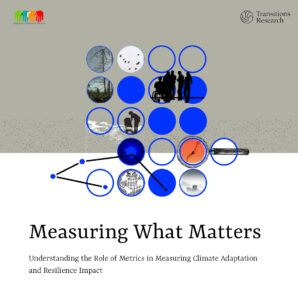Recent interactions between the Ministry of Environment, Forests and Climate Change (MoEFCC) and concerned states regarding the classification of certain parts of the Western Ghats as Ecologically Sensitive Areas (ESA) have once again highlighted the issue of management of this biodiverse region. While the state governments of Karnataka, Kerala, Goa, Gujarat, Maharashtra and Tamil Nadu believe that the region needs to be protected, they have pushed back against the extent of the area to be declared as ESA, and the kinds of activities that can be carried out here.
Maharashtra, for instance, wants 15% of the area classified as ESA to be allowed for mining and industrial activities; Goa wants 30 villages out of the 99 identified as potential ESAs to be excluded and the State Wildlife Board has even discussed the possibility of several projects, including a railway line, a transmission line and a highway expansion proposal that would affect the Bhagwan Mahavir Wildlife Sanctuary and the Mollem National Park – both eco-sensitive areas of the Western Ghats. The National Board for Wildlife and MoEFCC’s Expert Appraisal Committee has, in the middle of the nationwide lockdown, given the green light to two of these projects – the transmission line and the expansion of the highway, which would require the felling of trees at a substantial scale (Roads and transmission lines are known to fragment habitats and wildlife corridors). In Karnataka, weeks before the ESA deliberations between the national and state governments, the authorities green signalled a railway project that would clear nearly 1000 hectares of forest land in the north, posing a threat to the survival of several endemic species and increasing the chances of landslides and the diminution of carbon removal capacity caused by the loss of vegetation.
Ecological significance of the Western Ghats
Faced with increased pressure from state governments in declaring portions of the Western Ghats as ecologically fragile, even as evergreen forests are drastically turned into sites for industrial activities and endemic species continue to dwindle, the governance of the Western Ghats needs to be reimagined urgently. Regional governance approaches which have worked in other biodiverse contexts, such as the Great Barrier Reef in Australia could provide useful lessons in this regard.
The Western Ghats are of immense ecological significance, not just for any one state, but for large portions of peninsular India. Straddling Gujarat to Kerala, this biodiversity hotspot contains more than 30% of all plant, fish, bird, and mammal species found in India. The Ghats are also the ‘water tower’ of peninsular India and the source of several perennial rivers including Mandovi, Zuari, Krishna, Cauvery, Netravathi and Tungabhadra. In addition, the critical function of the region in moderating tropical climate along the western peripheries of the Indian peninsula, and more broadly, in influencing the Indian monsoon weather pattern, are ecological services that are availed by millions of citizens residing beyond the evergreen tropical forests. Recognizing the importance of the region, in 2015, UNESCO approved India’s proposal for listing the Western Ghats as a World Heritage Site.
Gadgil and Kasturirangan reports – wide disparities
Yet, defining the boundaries of the Ghats, identifying eco-sensitive zones that support faunal diversity, and determining the kind of economic activities that would not diminish its socio-ecological functions – have all been nagging issues which have only delayed the robust governance of the Ghats. The lack of concerted political will to protect the region is perhaps exemplified in prolonged contestations around the recommendations of two expert committee reports of the past decade, as well as the glaring disparities between these two reports.
The Gadgil Commission (Western Ghats Ecology Expert Panel) report of 2011 recommended classifying 137,000 hectares of the Ghats as Eco-Sensitive Areas (ESA) – subdivided into three Eco Sensitive Zones (ESZ) to determine the kind of economic activities that could be carried out. The Kasturirangan Commission (High-level Working Group) report of 2013, however, reduced the area of the ESA to a total of 60,000 hectares and did away with the ESZ classification of areas. The Kasturirangan report also dismissed the need to establish a Western Ghats Ecology Authority (WGEA) – a regional authority recommended by the Gadgil Commission for the management of the Ghats.
Governance challenges – need for a regional authority
Apart from the two widely divergent reports, the governance of a region of the scale of the Ghats is a challenge in itself. Several authorities including the national and state governments and their respective environment ministries, as well as a multitude of government departments and agencies, are responsible for the governance of the Ghats. These include the National Biodiversity Authority, the National Board for Wildlife, the Central Pollution Control Board; state-level Pollution Control Boards, Forest Departments, Biodiversity Authorities, State Wildlife Boards; and local-level authorities such as Gram Sabhas and other institutions like the Gram Panchayat, Block Panchayat and Zilla Parishad which often have devolved powers to legislate on matters concerning agriculture, animal husbandry, fisheries, water management, and social welfare, among others. Since the 42nd Constitutional Amendment of 1976, forests have been brought under the Concurrent List, which means that both the national and state governments can make laws on the subject; in case of a conflict, however, national legislation will prevail.
Caught in this political quagmire, the governance of the Western Ghats has not evolved in the last decade, even as state governments continue to invoke the socio-economic development of remote regions in the Ghats to override the restrictions that will follow when the MoEFCC’s ESA notification is implemented. While it may be nothing short of a herculean task, establishing a regional authority which draws its mandate and powers from a Western Ghats-specific legislation is perhaps the need of the hour.
The Great Barrier Reef Marine Park Authority
In the case of the Great Barrier Reef (GBR), an environmental regime centered around a regional decentralized authority – the Great Barrier Reef Marine Park Authority (GBRMPA) – has been successful in managing this eco-sensitive region. In 1975, the Australian government enacted a national legislation specifically for the GBR, which led to the creation of the GBRMPA as well as a joint ministerial council, comprising ministers from the national and the state governments.
In the 1980s and 1990s, additional state-level land, water and coastal arrangements were added for the protection of the GBR. A national environmental legislation introduced in 1999 further strengthened the institutional protection of the GBR and gave non-governmental organizations the power to act on behalf of affected communities.
Between the late 1990s and early 2000s, the GBR region was divided into eight zone types, which determined allowable activities, such as fishing, within each zone. The rezoning was designed to work in conjunction with a variety of other management tools developed before and after the rezoning, including public participation, traditional-use agreements, species protection and special management areas, management and site plans, impact assessment, permits, monitoring and enforcement measures, public education, and reporting. All these measures, centered around a regional authority and a diversity of state and non-state actors and institutions, led to a relatively stable polycentric regime by the late 2000s, which was only thwarted due to the 2007-2008 global financial crisis when public spending cuts and internal restructuring diluted the effectiveness of the GBRMPA. Subsequently, increased lobbying for environmental deregulation and new political appointees to the GBRMPA board who favored mining interests, shifted the focus of the regime from conservation to sustainable use.
Perhaps the solution here lies in establishing a regional authority for the Western Ghats with oversight over all relevant national and state-level institutions, and subsequently plugging in state-level development and management plans on a case-to-case basis. This is primarily because a straddling ecological region such as the Western Ghats cannot be governed through existing national and state-level institutions which have been devised with particular administrative units in mind. On the flip side, the regional governance of the Western Ghats is not expected to be a silver bullet either. States will continue to pursue socio-economic development – in the process, felling trees for railway lines, dams, factories and mining projects.
What regional governance of the Western Ghats has to offer though, is increased decision-making to local governments and community-based organizations to be able to resist agendas aimed at the exploitation of the Ghats. The creation of a financially-stable and relatively independent regional authority could also help bridge the gap between national and state-level interests, and more importantly, reduce the risk of regulatory capture by vested interests. The presence of multiple state and non-state actors within this framework – the regional authority, national, state and local governments, community-based non-governmental organizations, scientific research committees and institutions, and industry associations – could offer transparency and effective checks and balances, geared towards the protection and fair-use of a biodiverse region which has evolved to its present state through a journey of over a hundred million years.
The publication was first published by the authors under auspices of erstwhile Tandem Research.




